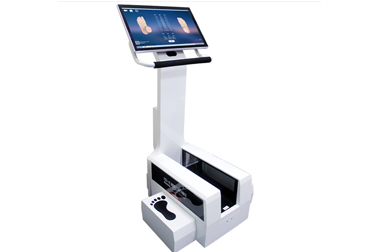Analysis of typical application scenarios of foot-shaped 3D scanners
1. Medical rehabilitation and orthopedic fields
Foot disease diagnosis and correction plan formulation
By using data such as arch height and sole contact area with millimeter-level accuracy, it can quickly identify abnormal foot shapes such as flat feet, high arches, and inversion and inversion of the foot, and support doctors in formulating personalized correction plans (such as 3D printed orthopedic insoles). For example, the scanning data can quantify the degree of arch collapse and provide a customized support structure for pathological flat feet (error ≤ 0.5mm).
Postoperative rehabilitation and prosthetic adaptation
After scanning the 3D data of the healthy foot, the affected side model is generated through mirroring technology for prosthetic shape design and adaptation to ensure bilateral symmetry; at the same time, the postoperative foot morphology changes are tracked to evaluate the rehabilitation effect.
2. Shoe design and customization scenarios
Personalized shoe production
Combining data such as foot length, foot width, and arch curvature, it drives the intelligent matching of the shoe last library to produce customized shoes that fit the foot shape and reduce foot wear problems. For example, children’s footwear customization can dynamically adjust the shoe shape by tracking foot development through regular scanning.
Precise development of corrective insoles
Based on the plantar pressure distribution and three-dimensional morphological data, the partition support structure (such as the forefoot metatarsal pad and the heel cushioning layer) is designed to optimize the pressure dispersion effect (some cases show that the forefoot load is reduced by 30%-50%).

III. Sports science and health management
Children’s foot development monitoring
Regular scanning establishes a foot growth database to detect abnormal arch development early (such as physiological flat feet to pathological transformation) and timely intervention to avoid bone deformities.
IV. Extended applications in industry and scientific research
Foot biomechanics research
Provide high-precision three-dimensional data for gait analysis and foot force model construction, and support basic research such as human walking mechanism.
Smart shoe selection and consumption upgrade
In retail scenarios, consumers scan their foot shape and automatically match the shoe model library, recommend suitable shoe sizes and shoe shapes, and reduce the return rate (such as matching algorithms can reduce 30% of trial wear errors).
